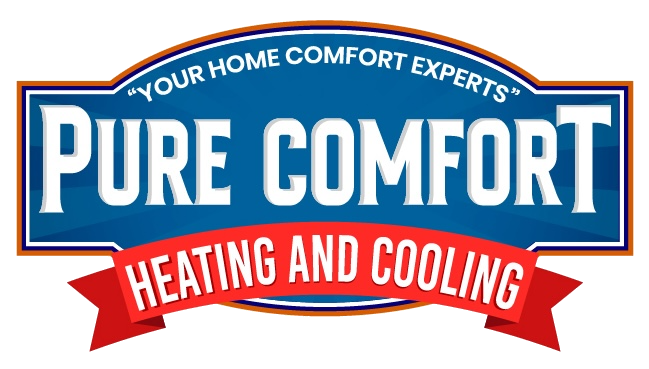
Ceiling fans are one of the most overlooked ways to increase home comfort and cut energy costs. By enhancing air circulation and supporting your HVAC system, ceiling fans and energy efficiency are truly a match made in heaven. They offer a cost-effective, eco-friendly way to maintain your comfort in hot weather while easing strain on your AC—helping you avoid unnecessary air conditioning repair.
In this blog, the experts at Pure Comfort Heating and Air Conditioning break down how ceiling fans can make your home feel more comfortable while saving you money thanks to increased HVAC efficiency. We'll also offer some HVAC efficiency tips that put to good use ceiling fans.
Comfort vs. Temperature: The Effect of the Wind-Chill Effect Indoors
Ceiling fans don’t actually lower the room temperature—they make you feel cooler by blowing air across your skin. This is known as the wind-chill effect, and it can make a room feel up to 4 degrees cooler without lowering the thermostat. That means you remain cool and enjoy the benefits of indoor air circulation from your ceiling fan while relying less on your air conditioner—helping reduce your electric bill in summer.
The Best of Both: Benefits of Using Fans and Air Conditioning Together
There are several benefits to using ceiling fans and air conditioning in tandem, especially on hotter days. By using both, you increase HVAC efficiency and keep your home cooler with less strain from your cooling system.
Benefits of using ceiling fans and AC together:
- Ceiling fans help lower HVAC load by circulating cool air more evenly throughout the room. Decreasing HVAC stress is important, because it can prevent a breakdown that could lead to premature AC or furnace installation.
- Using ceiling fans improves your indoor comfort by eliminating hot spots and enhancing circulation.
- Combining ceiling fans and AC can lower your utility usage. If you have a home automation system, you can even fine-tune your smart thermostat settings to increase the temperature slightly while your ceiling fan is running.
Clockwise vs. Counterclockwise Ceiling Fan Rotation: What Direction to Spin in Summer and Winter?
To make full use of your ceiling fans year-round, it’s important to ensure blades are rotating in the proper direction for the season. The direction impacts how air moves, which can either or push warm air downward so you feel warmer.
When to spin ceiling fans counterclockwise
When it's hot outside, ceiling fans should spin counterclockwise at a quick speed. This creates a breeze that moves air toward the floor, increasing the wind-chill effect and making you feel cooler.
When it's best to spin ceiling fans clockwise
In the winter, set your fan to rotate clockwise on a gentle setting. This gently pulls cool air upward and draws warm air downward from the ceiling, helping you feel warmer without adjusting your thermostat.
How to Pick Out the Best Ceiling Fan for My Home
Selecting the ideal ceiling fan depends on a few key factors, including blade design, airflow rating and room dimensions. First, look for fans with a good combination of ECFM airflow and blade pitch to deliver efficient air circulation in your home:
- ECFM refers to how much air a fan pushes—the cubic feet per minute, or CFM—per watt of electricity consumed. Fans with higher ECFM are the most energy efficient.
- Blade pitch refers to the incline of the blades. A steeper blade pitch moves more air than a shallower pitch but can also put extra load on the motor.
Also, consider room size when sizing a ceiling fan—a fan that’s too small won’t move enough air, while one that’s too big may be overpowering for the room.
Boost Your HVAC Efficiency With Help from Pure Comfort Heating and Air Conditioning
At Pure Comfort Heating and Air Conditioning, our HVAC specialists can help you maintain a cozy home while easing the burden on your heating and cooling systems. From efficient ceiling fan strategies and air conditioning installation to smart thermostats and furnace repair, we offer comprehensive services that match your needs. Schedule your appointment by calling 630-948-4591 today.

